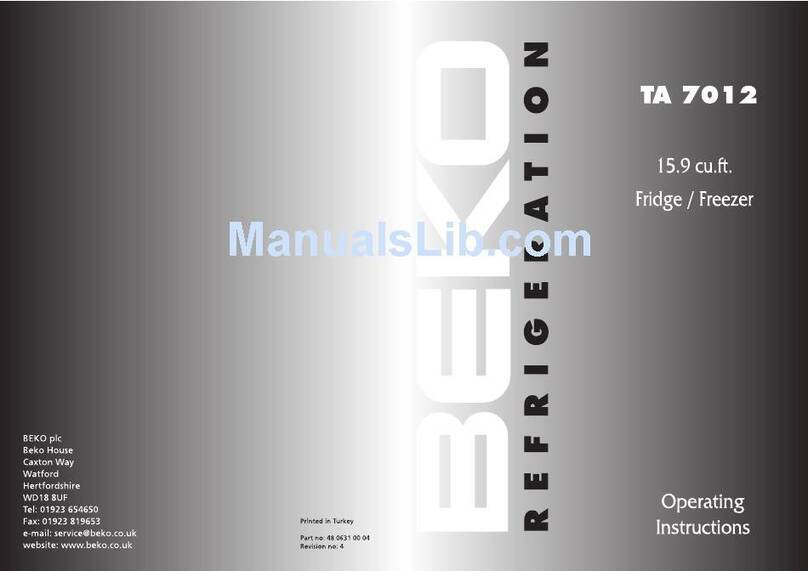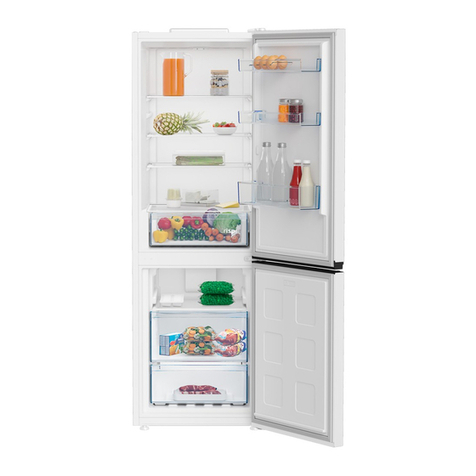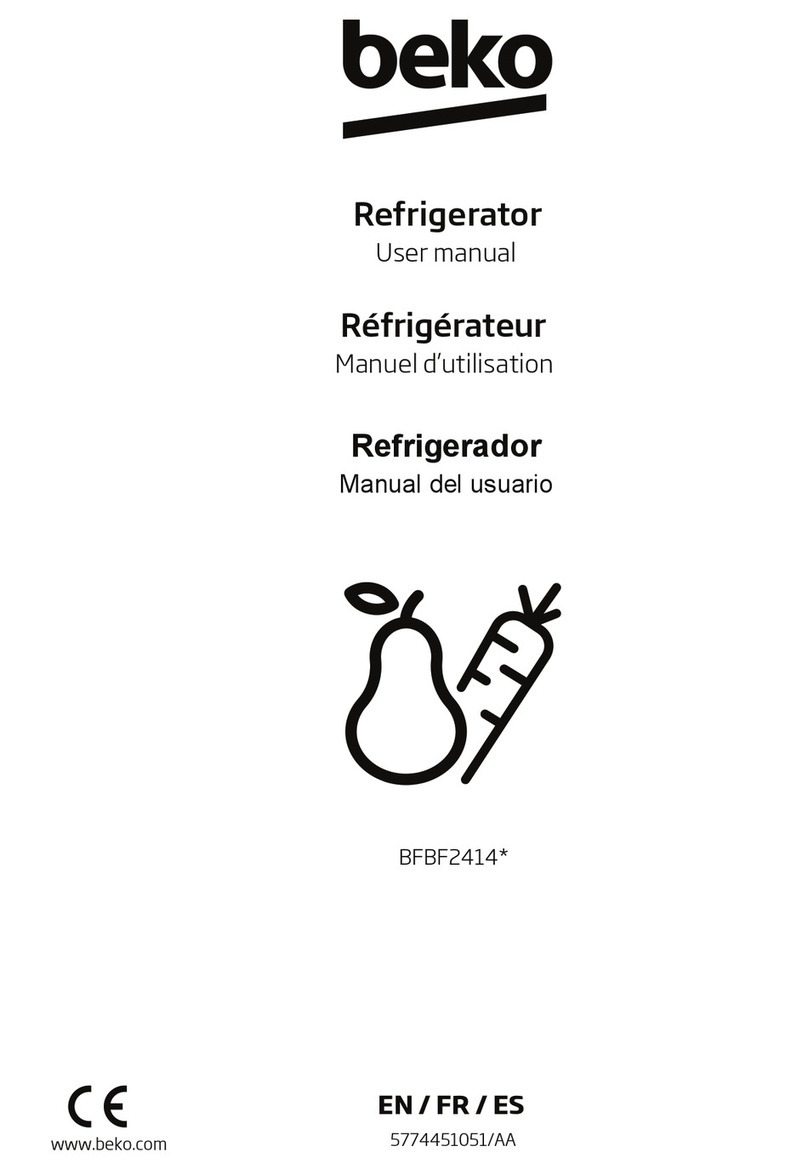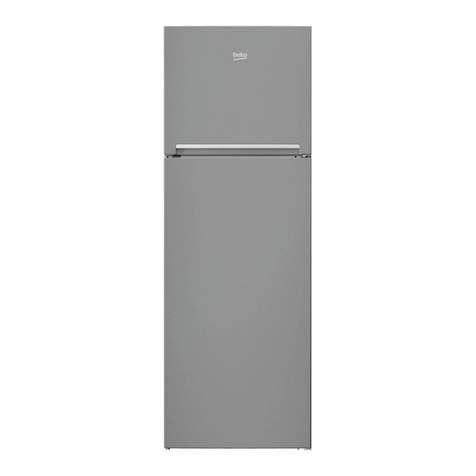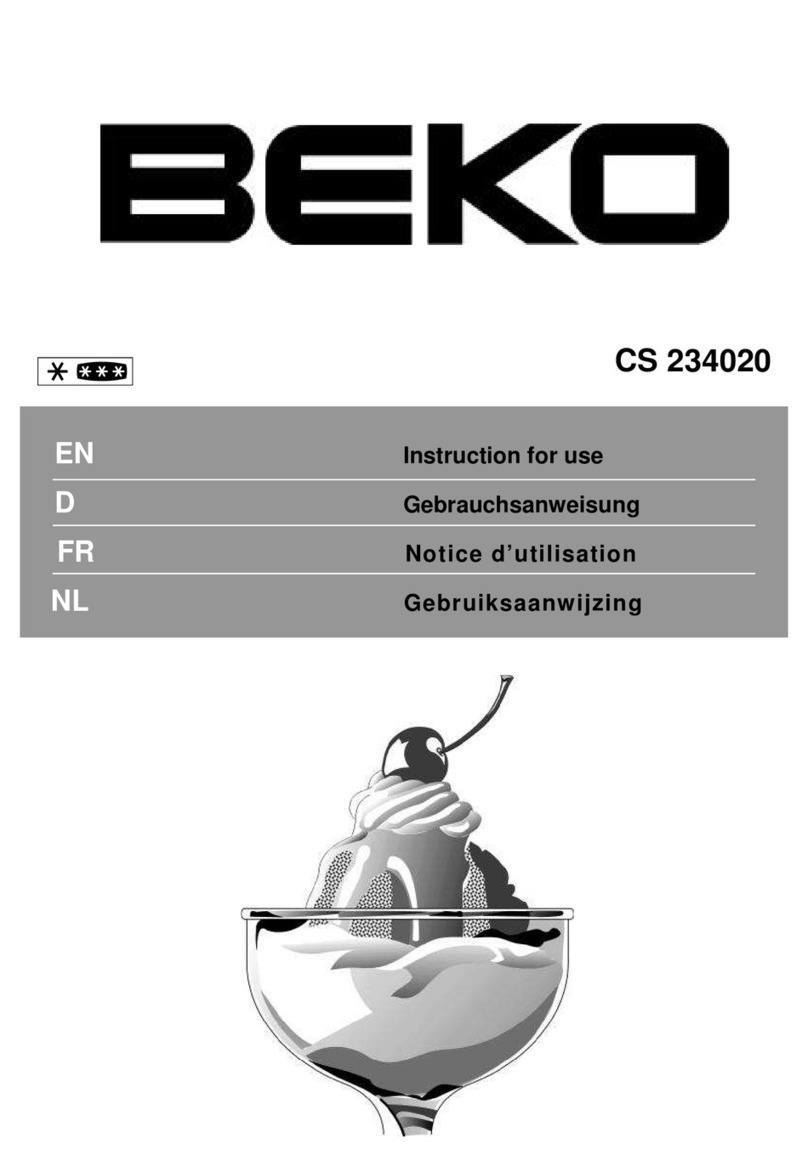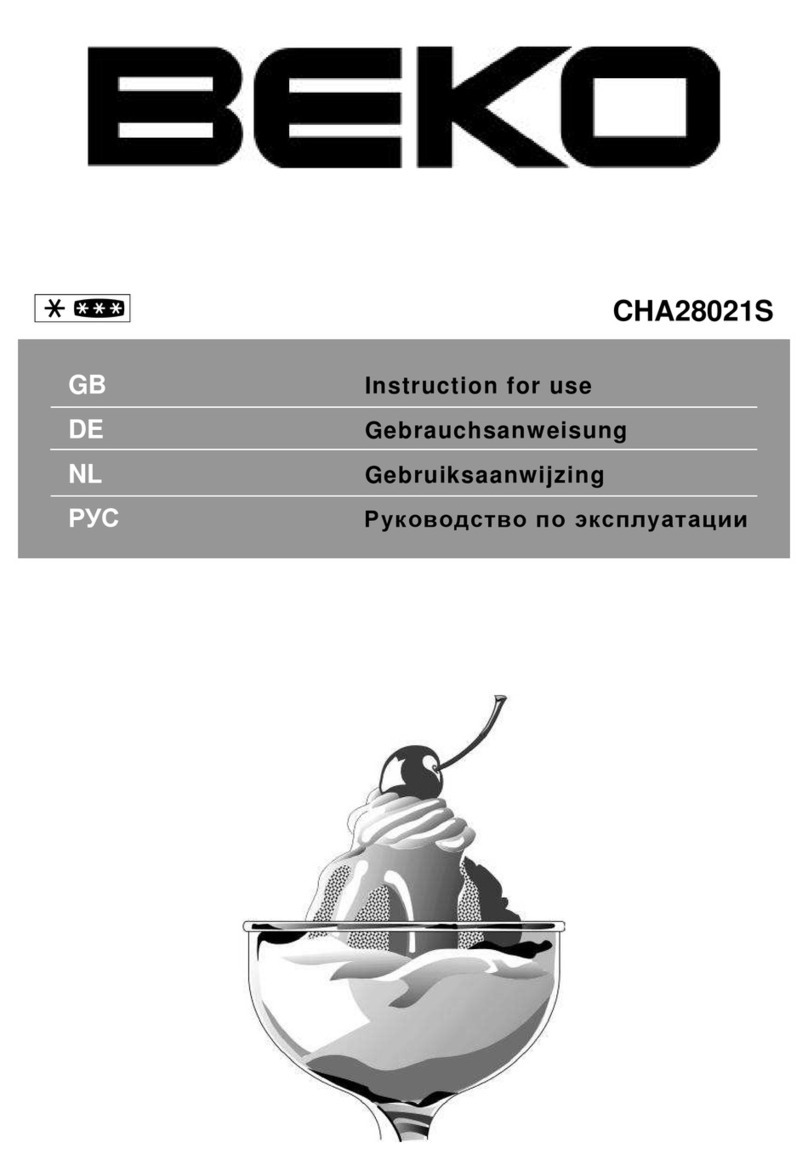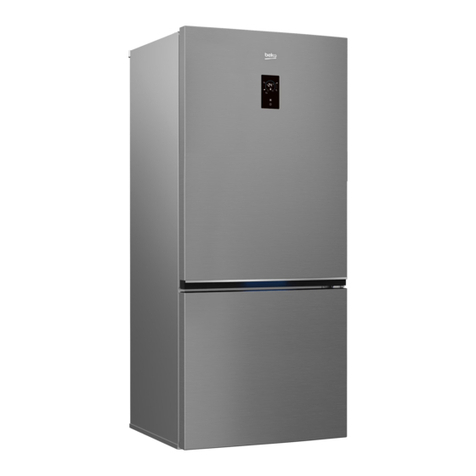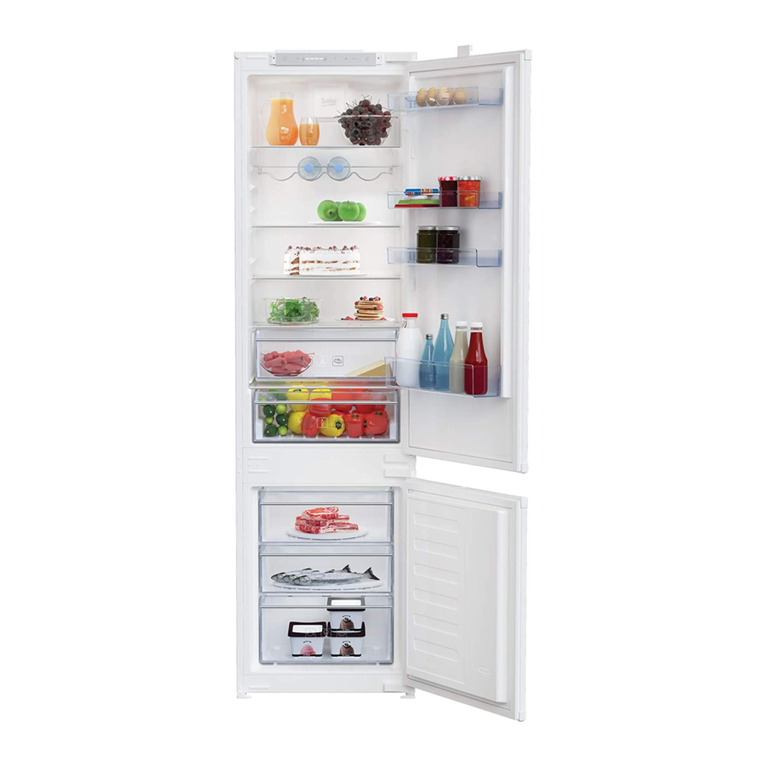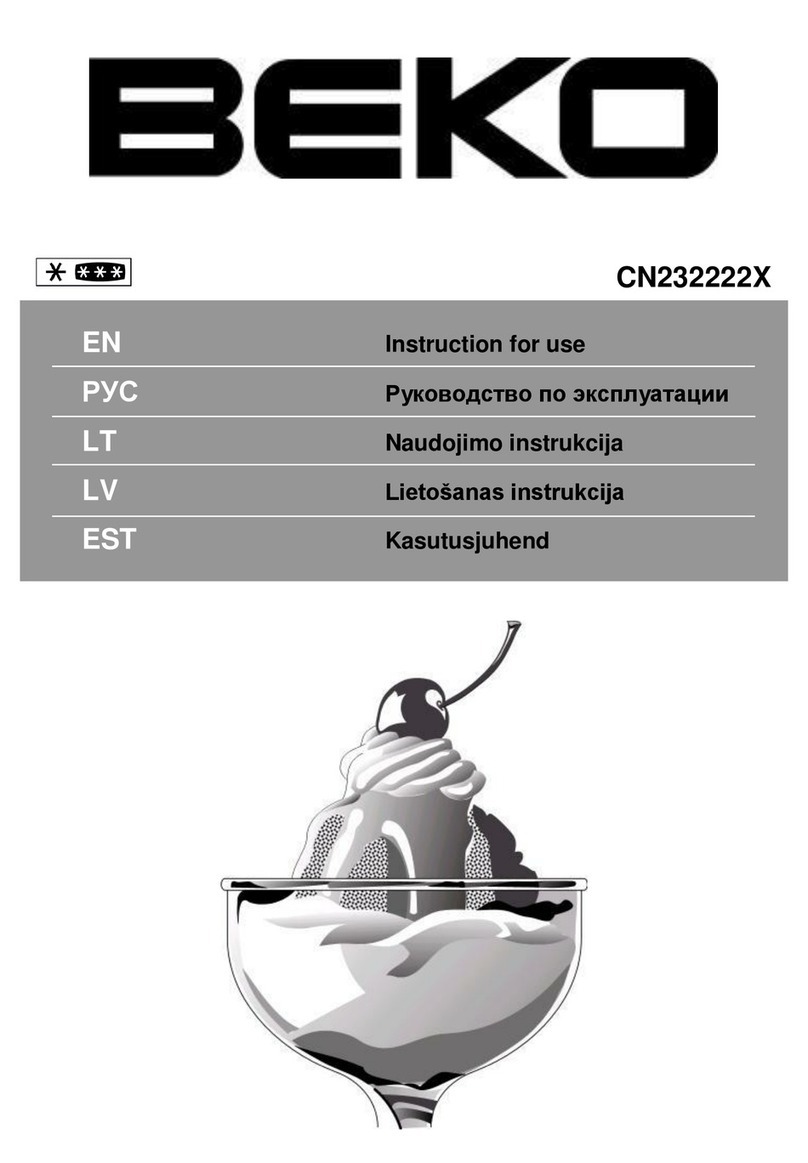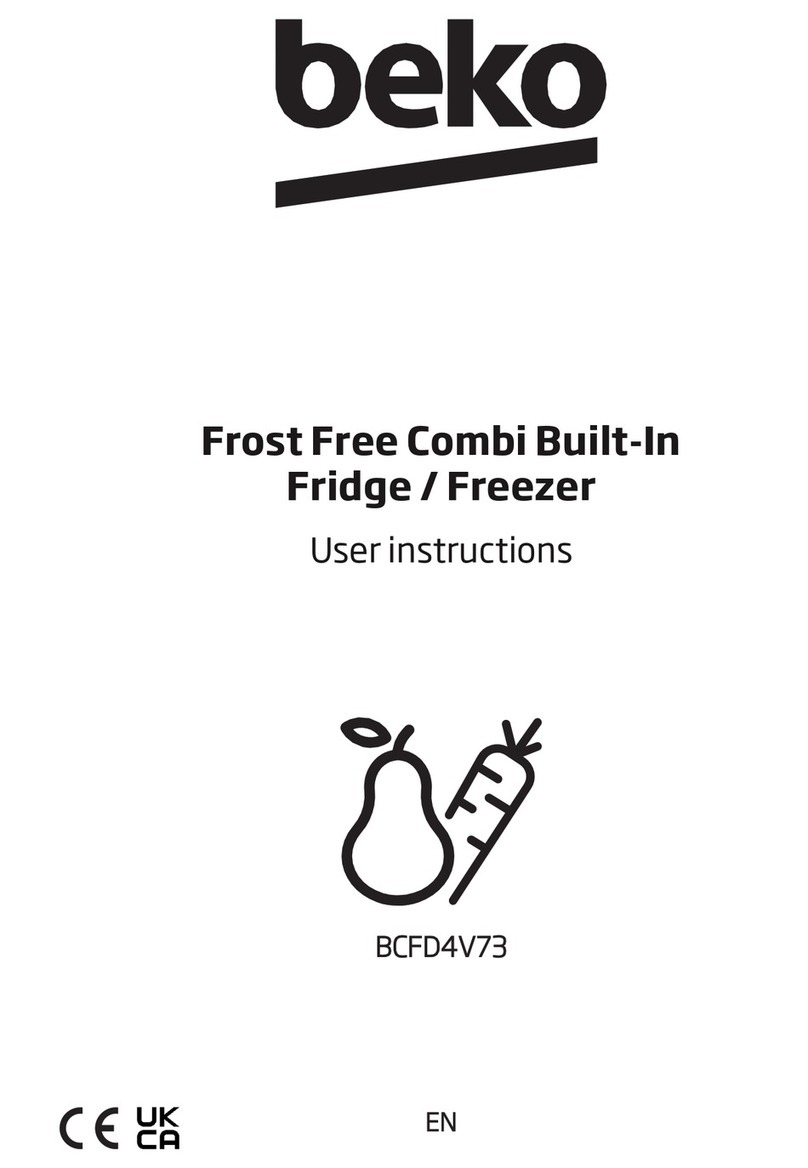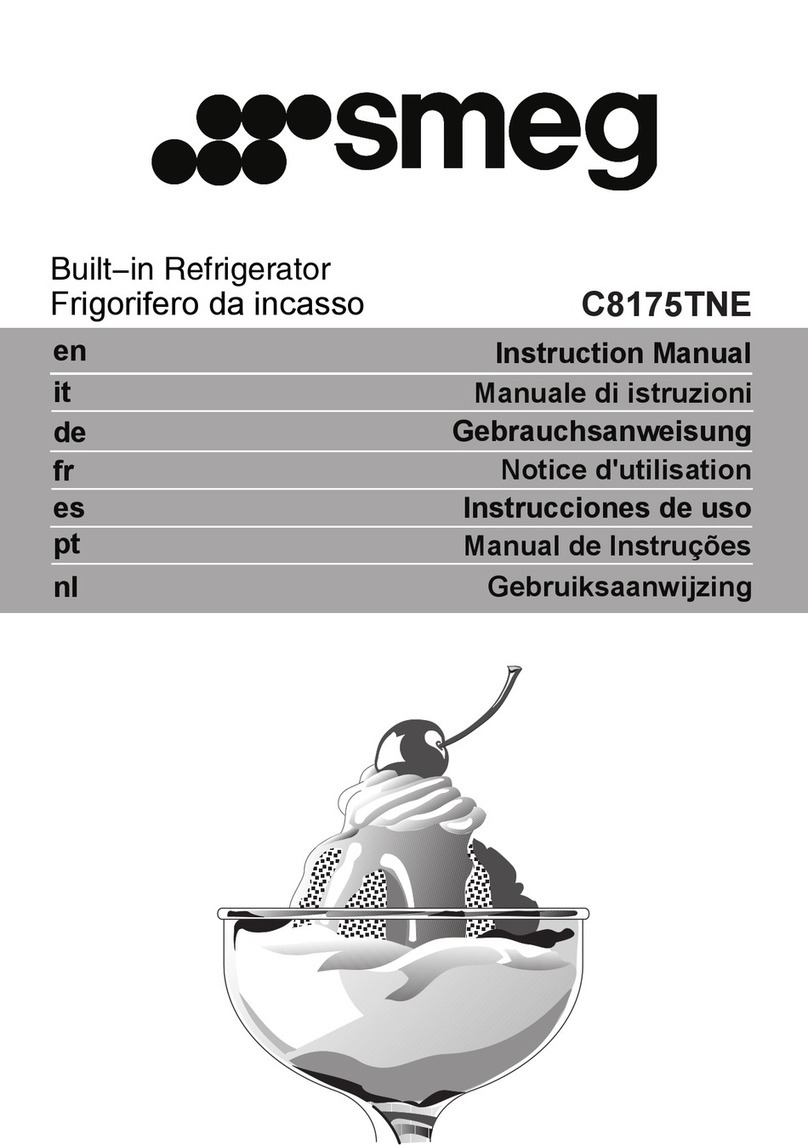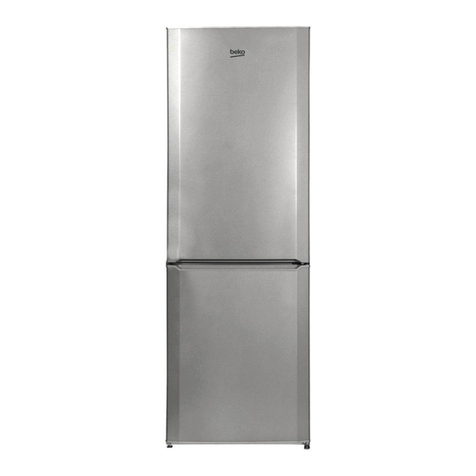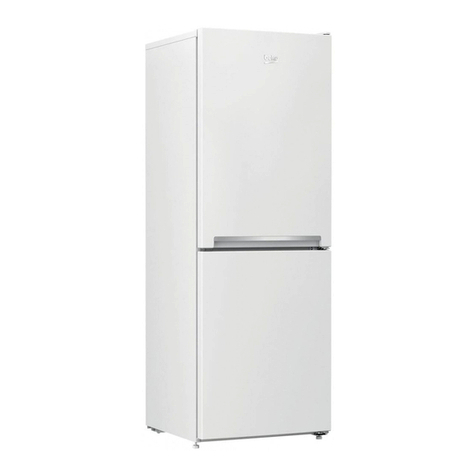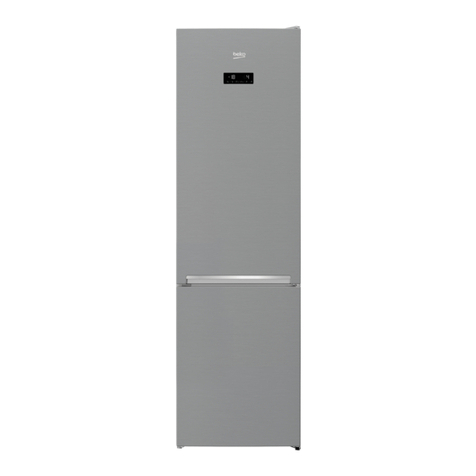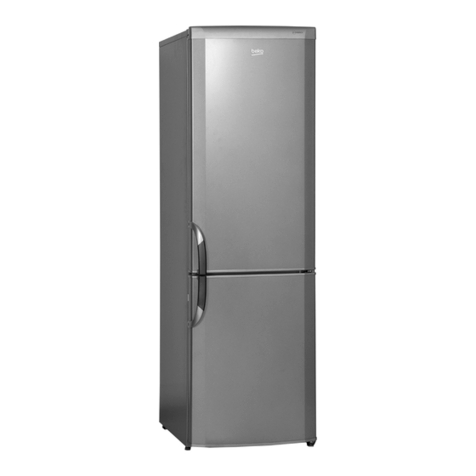EN
5
• Do not touch frozen food by
hand; they may stick to your
hand.
• Unplug your cooler/freezer
before cleaning or defrosting.
• Vapor and vaporized clean-
ing materials should never be
used in cleaning and defrost-
ing processes of your cooler/
freezer. In such cases, the
vapor may get in contact with
the electrical parts and cause
short circuit or electric shock.
• Never use the parts on your
cooler/freezer such as the
door as a means of support or
step.
• Do not use electrical devices
inside the cooler/freezer.
• Do not damage the parts,
where the refrigerant is circu-
lating, with drilling or cutting
tools. The refrigerant that
might blow out when the gas
channels of the evaporator,
pipe extensions or surface
coatings are punctured causes
skin irritations and eye inju-
ries.
• Do not cover or block the ven-
tilation holes on your cooler/
freezer with any material.
• Electrical devices must be
repaired by only authorised
persons. Repairs performed by
incompetent persons create a
risk for the user.
• In case of any failure or during
a maintenance or repair work,
disconnect your cooler/freez-
er’s mains supply by either
turning off the relevant fuse
or unplugging your appliance.
• Do not pull by the cable when
pulling off the plug.
• Place the beverage with
higher proofs tightly closed
and vertically.
• Never store spray cans con-
taining flammable and explo-
sive substances in the cooler/
freezer.
• Do not use mechanical devices
or other means to accelerate
the defrosting process, other
than those recommended by
the manufacturer.
• This product is not intended
to be used by persons with
physical, sensory or mental
disorders or unlearned or
inexperienced people (includ-
ing children) unless they are
attended by a person who will
be responsible for their safety
or who will instruct them ac-
cordingly for use of the prod-
uct
• Do not operate a damaged
cooler/freezer. Consult with
the service agent if you have
any concerns.
• Electrical safety of your cool-
er/freezer shall be guaranteed
only if the earth system in
your house complies with
standards.
• Exposing the product to rain,
snow, sun and wind is danger-
ous with respect to electrical
safety.
• Contact authorized service
when there is a power cable
damage to avoid danger.

